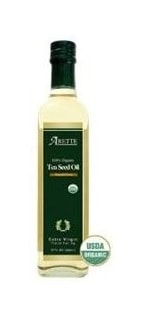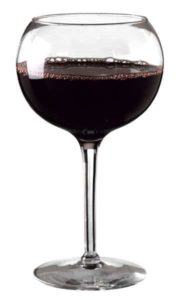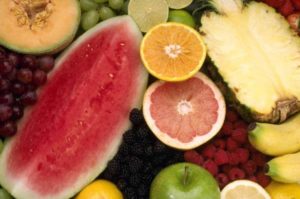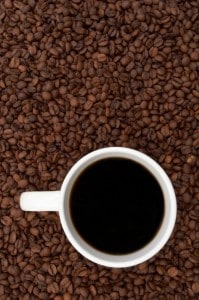Fertility medicine, which barely existed 50 or 60 years ago, is one of today’s fastest growing medical specialties. Many couples are waiting longer to start their families these days and as the age of wannabe parents increases, so do their fertility troubles. But are there other factors driving increased fertility problems? Could the modern diet or poor nutrition status be partly to blame?
This article also available as a podcast. Click to listen.
I recently attended an educational session with Jorge Chavarro, the Harvard doc who authored the best-selling book The Fertility Diet. Chavarro’s dietary recommendations are based on data from the Nurse’s Health study, which tracked the diet and health of 18,000 women over the course of several years. Some of those women had children during the years that data was being collected while others tried unsuccessfully to get pregnant.
It’s important to realize that Chavarro didn’t treat any of these women for infertility, nor did he make any nutritional recommendations to them. He simply compared the diets of women who got pregnant to those who couldn’t, to see if he could identify any trends. And he did, in fact, identify several factors that the women who got pregnant had in common.
The program outlined in The Fertility Diet is simply a summary of those factors. The hope is that if you mimic the diets of women who get pregnant, you too will get pregnant. I say the “hope” instead of the “promise” because this claim has never actually been tested in a systematic way. But, with that disclaimer in mind, let’s take a look at the factors associated with greater fertility.
Dietary Factors Linked to Fertility
Chavarro documented that women whose diets were highest in trans fats, refined carbohydrates, and animal protein were the most likely to suffer from infertility. Women who followed a more Mediterranean-style diet (higher in vegetables, legumes, whole grains, nuts, olive oil, fish, and so on) were least likely to experience infertility.
Nothing earth-shaking here: The dietary pattern associated with increased fertility is a nutrient-dense diet that’s low in junk and processed food. When you take good care of yourself, all your systems will probably function better, including your reproductive system.
Does Butterfat Help You Get Pregnant?
There was, however, one finding that surprised researchers, because it doesn’t line up with widely held notions about “healthy” diets. Women who ate high fat dairy seemed to be more fertile than those who ate low fat dairy products. In his talk, Chavarro threw out a couple of hypotheses…..
First, low fat dairy products are higher in milk sugar, or lactose. During digestion, lactose is broken down into two simpler sugars: glucose and galactose. The second of these, galactose, has been shown to interfere with ovarian function. The idea is that women who drink low-fat dairy products will be exposed to more galactose and that this might inhibit conception. Interestingly, if you are lactose intolerant, your body is not able to break lactose down and you’d be protected from this effect. Then again, drinking milk would probably give you a tummy ache so you’d probably be avoiding it anyway.
The other theory Chavarro proposed was even more intriguing: Cow’s milk comes from pregnant cows and contains various bovine hormones associated with pregnancy and lactation. Because hormones are fat soluble, whole fat dairy products (even organic ones) would have higher levels of these hormones than low fat dairy. Although many people think of hormones in milk as something to avoid, Chavarro wonders whether the natural hormones in dairy fat might actually play a supportive role in human reproductive function. Mind-blowing, huh?
Exercise, Body Weight, and Fertility
If you’re overweight, you may want to work on losing the weight before working on getting pregnant.
Chavarro’s research suggests that switching to full-fat milk and yogurt might boost your odds of getting pregnant. But this is not a free pass to start pounding the Ben and Jerry’s. Being overweight or obese will dramatically lower your chances of getting pregnant. In fact, the rise in average body weight is a major factor in rising infertility rates. Chavarro’s analysis confirms that women who were at a healthy body weight and who exercise 30 minutes a day are much more likely to get pregnant.
But there is a bit of a catch-22 for overweight women who want to become pregnant. As clinical dietitian Judy Simon points out, fertility can be suppressed during active weight loss. When calories are sparse, she says, the body prioritizes its use of energy, and reproductive function takes a temporary hit. This affects both women who are underweight and women who are cutting calories in order to lose weight.
If you’re overweight, you may want to work on losing the weight before working on getting pregnant. Not only will you probably have an easier time getting pregnant once your weight is stable, but both you and your baby will be healthier if you start your pregnancy at a healthy body weight.
Will Following the Fertility Diet Help You Get Pregnant?
Obviously, improving your diet or nutritional status can’t hurt your chances of getting pregnant—and it may well help. There’s also a widespread belief (and a lot of anecdotal evidence) that stressing about getting pregnant is one of the biggest obstacles to conception. Fertility docs are always telling their patients to relax. It could be that following a so-called “fertility diet” also has a powerful placebo effect—helping couples feel more optimistic and giving them something to focus on while they wait for nature to take its course.
Originally published at QuickandDirtyTips.com
As the temperatures dip and the days get shorter, comfort foods may seem like just the thing. If you find yourself craving carbohydrates at this time of year, it may be due to a seasonal dip in serotonin levels. Eating carbohydrates tends to increase serotonin production, which can elevate your mood–but only temporarily. In a few hours, you need another fix. By the time winter is over, you may have packed on a lot of carbohydrate-fueled pounds.





